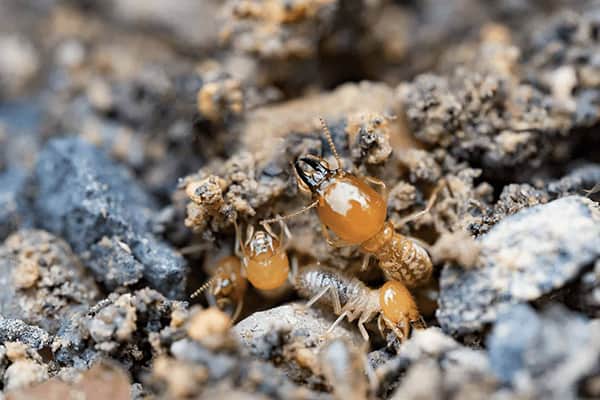This is the time of year when we get calls about swarms of things that look like flying ants. Spoiler alert, they probably aren’t ants. Termite season is upon us, and we recently were called to a home in a local established neighborhood in Fort Myers for suspected termite infestation. Unfortunately, the termites we found are not your typical run-of-the-mill wood eaters. Instead, we found the dreaded Formosan termites. These wood-destroying monsters breed at a much higher rate and have built-in work processes that make them some of the most efficient and destructive termites on the planet. Although they can thrive in our environment, in 20 years, Tempco has only had to treat Formosan termites a handful of times. That may be changing with this new discovery. Unfortunately, it is very difficult to identify Formosan termites vs. the regular subterranean variety. Our techs take several extra steps when we see an infestation. First, we look for points of entry signs specific to Formosans. Many times, we crawl through attics, use moisture detectors, and do other investigative work. We bring samples back to our office to inspect under a microscope to confirm our findings. Once confirmed, we alert the homeowner that this highly destructive invasive termite is in their home. From there, we review customized treatment options for their consideration.

Formosan termites originated in South Asia
Formosan termites originated in South Asia and are suspected to have arrived in the United States in the 40s following WWII. They thrive in moist, warm climates, so the southern portion of the United States is a great place for them to call home. Like most invasive species, they can quickly overpower native species and are seven to 10 times more aggressive than common Subterraneans. They can consume a one-foot long 2 x 4 every 25 days. Like all subterraneans, they rely on moisture from soil to survive, but that’s where the similarity ends. Most subterraneans must leave their work and go back to the soil to get moisture. Formosans build nest boxes – kind of like a cistern – to store water for their colony. As a result, they do not have to waste any time traveling back and forth. They can just eat and eat and eat.
It’s not just a stellar work ethic that allows Formosans to outperform their native counterparts. Formosan colonies can outsize a regular subterranean colony by as much as 10 times the size. That means there are a whole lot more termites munching at the buffet. Imagine a family of 10 eating at the Golden Corral buffet when suddenly 100 hungry football players walk in the door. It’s kind of like that.
Formosan reproductive termites swarm on window sills or near indoor lights
Night hours are the most common times for swarms and can indicate that a colony is nearby. If swarms are found inside, there’s a really good chance of an infestation. They often leave telltale wings on the window sills that we can use for identification purposes. Although the swarming season only lasts through June, Formosans are with us all year long.
If you think you have Formosans, don’t worry. We’ve got you. Our treatment method of trench and treat, foaming wall voids, Bora-Care attic treatments, and/or our Trelona Baiting System can knock out an entire colony without displacing your family. No tenting. Once we identify the termite and treat it, we guarantee our work for one full year. Then, if you choose to purchase the extended warranty each year, you’re guaranteed for another year. If you have the extended warranty and you see a termite, we’ll retreat at no charge.
Don’t let your home become the next one on the bug buffet. Formosan termites are no joke and need expert treatment as quickly as possible. Your home is too important of an investment to lose to these wood eaters.